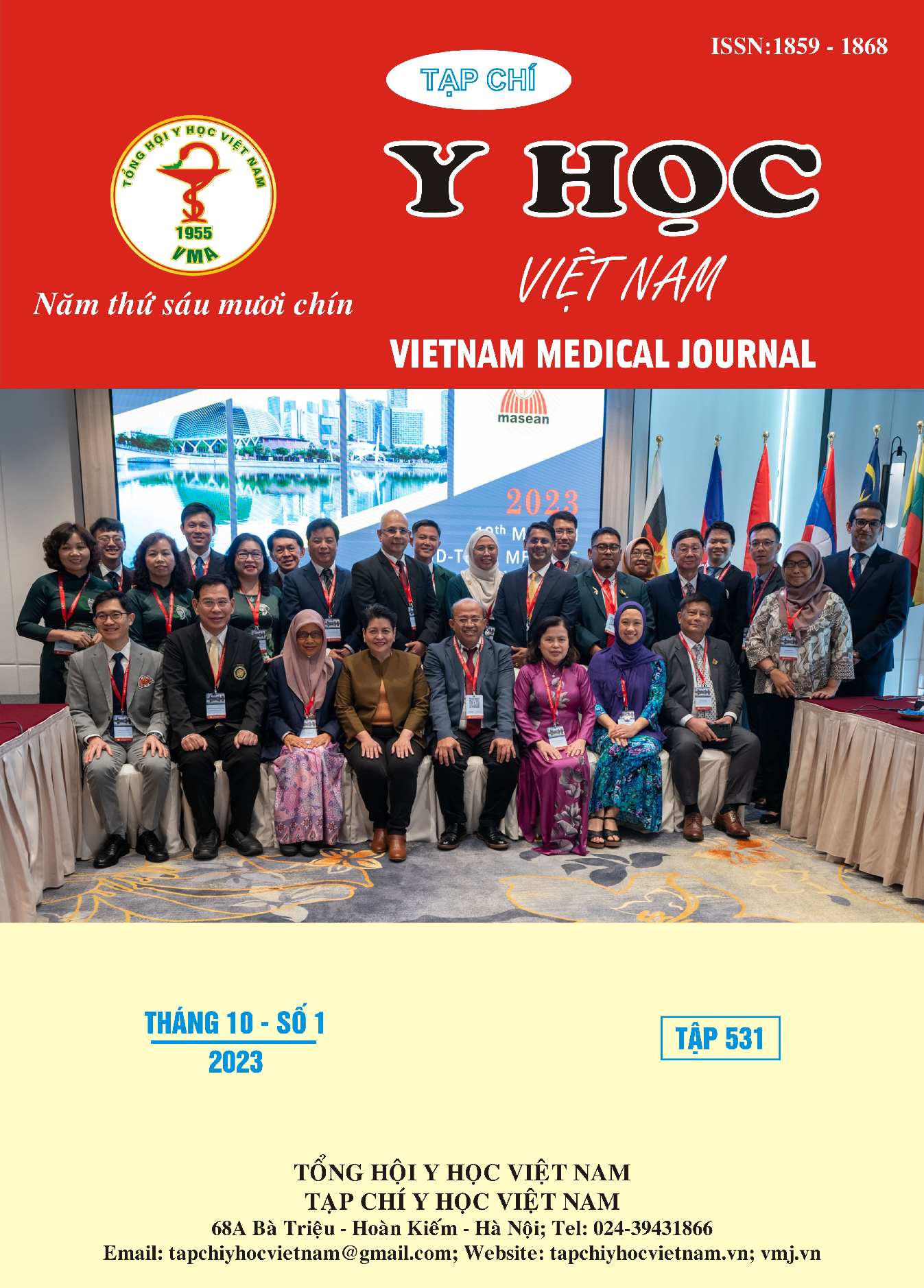STUDY ON THE INFERTILITY MODEL IN HIGH-FAT DIET-INDUCED OBESE MALE MICE
Main Article Content
Abstract
Objectives: To evaluate the genital morphology and spermatogenesis process in obese male mice. Materials and method: Male mice (Swiss albino) were divided into two groups, (12 animals/group), the NFD group (Normal-fat diet) and the other for the HFD group (High-fat diet). Mice were examined for markers such as the weight of sex organs, semen analysis, serum testosterone levels, and seminal vesicle diameters after 6 weeks of obesity induction. Results: The testes and epididymis of mice in the HFD group were smaller than those in the NFD group (p<0.05). The HFD group's sperm concentration and the percentage of non-progressive and progressive sperms were lower than those of the NFD group (p<0.001). Additionally, the HFD group showed a higher proportion of immotile sperm and abnormal morphology of sperm than that of NFD group (p<0.001). The serum testosterone levels in the HFD group were 150% higher than those in the NFD group (p=0.001). The seminal vesicle diameters of mice in the HFD group was 8.35% smaller than that of mice in the NFD group (p<0.05). Conclusion: Obese mice displayed reproductive impairment after 6 weeks of modeling with a high-fat diet.
Article Details
Keywords
testosterone, spermatogenesis, semen analysis, sperm, obesity, Swiss albino
References
2. Ghorbanlou M., Rostamkhani S., Shokri S., Mahmazi S., Fallah R., Moradi F., et Nejatbakhsh R. (2020). Possible ameliorating effects of Glycyrrhiza glabra (Licorice) on the sperm parameters in rats under high fat diet. Endocrine Regulations, 54(1), 22-30.
3. Gómez-Elías M. D., et al. (2019). Association between high-fat diet feeding and male fertility in high reproductive performance mice. Scientific reports, 9(1), 1-9.
4. Izquierdo A. C., Reyes A. E. I., Muñiz A. R. O., Mosqueda M. D. L. J., González J. A. G., Liera J. E. G., Lang G. R., Crispín R. H., Mancera A. E. V., Aparico P. S. et Sánchez R. S. (2020). Effect of oxidative stress on sperm cells. Glutathione System and Oxidative Stress in Health and Disease, 10, 1-20.
5. Koppers A. J., Garg M. L., et Aitken R. J. (2010). Stimulation of mitochondrial reactive oxygen species production by unesterified, unsaturated fatty acids in defective human spermatozoa. Free radical biology and medicine, 48(1), 112-119.
6. Machida T., Yonezawa Y., et Noumura T. (1981). Age-associated changes in plasma testosterone levels in male mice and their relation to social dominance or subordinance. Hormones and Behavior, 15(3), 238-245.
7. Palmer N. O., Bakos H. W., Fullston T., et Lane M. (2012). Impact of obesity on male fertility, sperm function and molecular composition. Spermatogenesis, 2(4), 253-263.
8. Yang F. L., Wei Y. X., Liao B. Y., Wei G. J., Qin H. M., Pang X. X., et Wang J. L. (2020). Effects of Lycium barbarum polysaccharide on endoplasmic reticulum stress and oxidative stress in obese mice. Frontiers in Pharmacology, 11, 742, 1-11.


